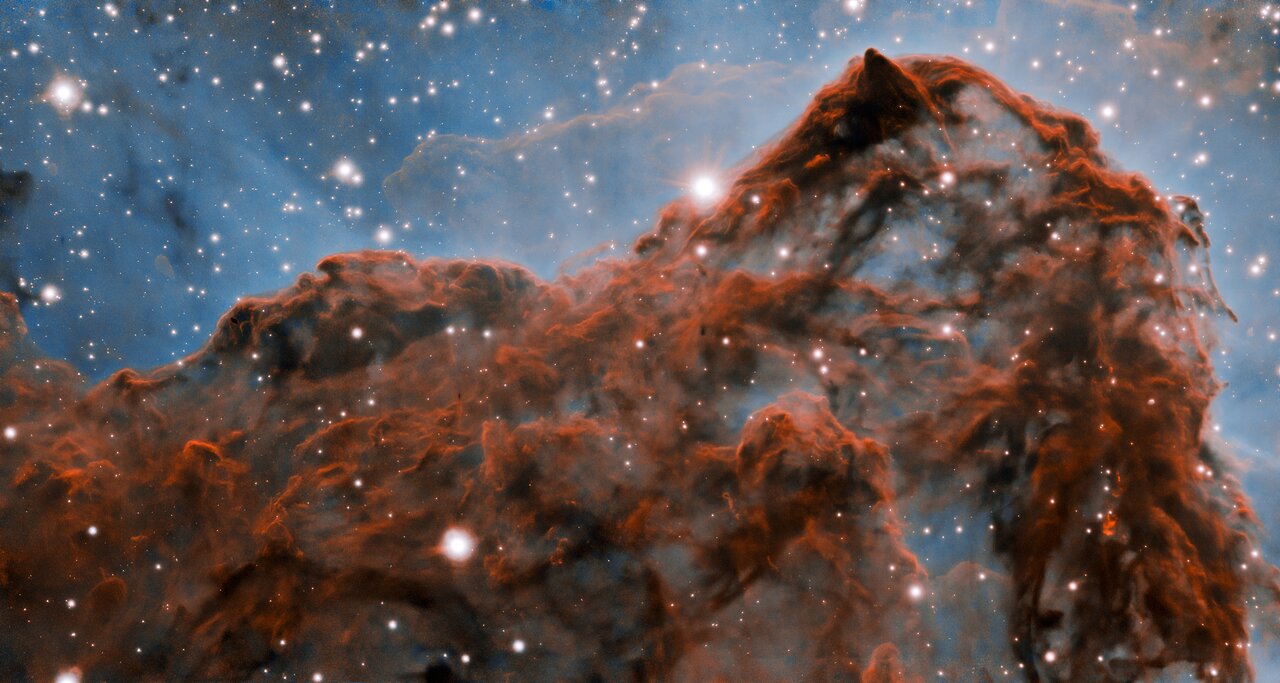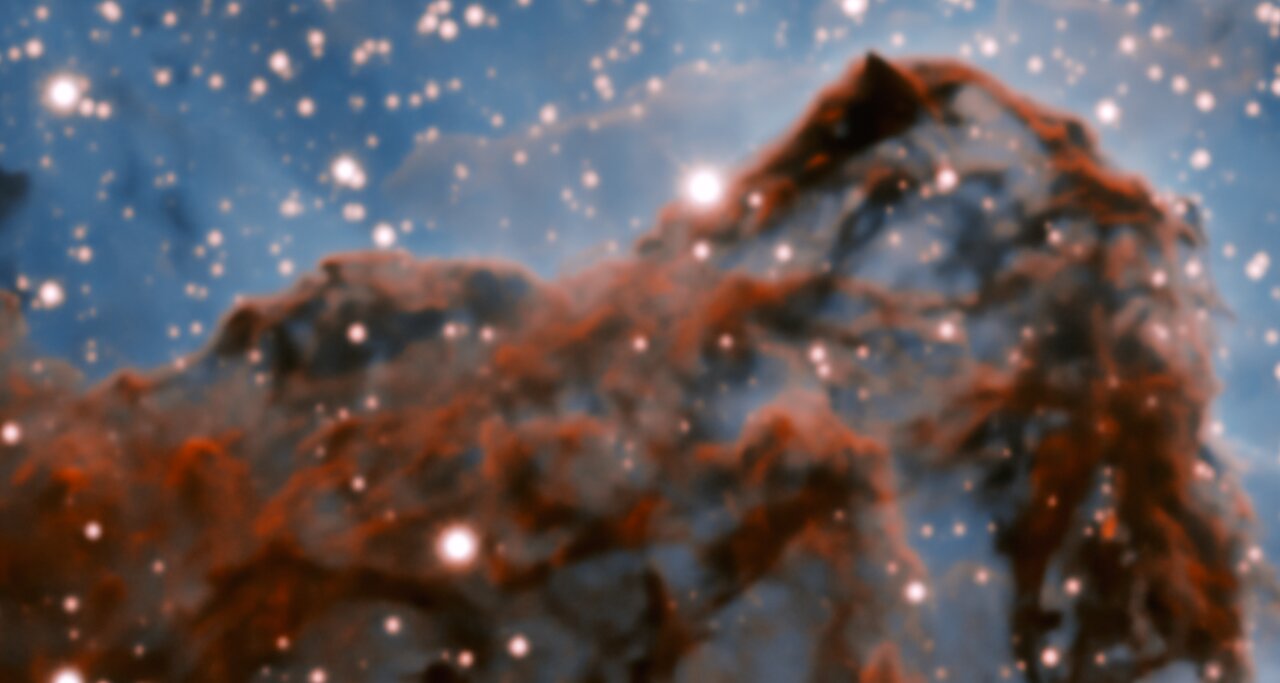Carina Nebula western wall (with and without adaptive optics)


A 50-trillion-km (33-trillion-mile, or 5 light-year) long section of the western wall in the Carina Nebula, as observed with adaptive optics on the Gemini South telescope. This mountainous section of the nebula reveals a number of unusual structures including a long series of parallel ridges that could be produced by a magnetic field, a remarkable almost perfectly smooth wave, and fragments that appear to be in the process of being sheared off the cloud by a strong wind. There is also evidence for a jet of material ejected from a newly-formed star. The exquisite detail seen in the image is in part due to a technology known as adaptive optics, which resulted in a ten-fold improvement in the resolution of the research team’s observations.
Créditos
International Gemini Observatory/NOIRLab/NSF/AURA
Acknowledgment:
PI: Patrick Hartigan (Rice University)
Image processing: Patrick Hartigan (Rice University), Travis Rector (University of Alaska Anchorage), Mahdi Zamani & Davide de Martin
About the Image Comparison
| Id: | noirlab2025a |
| Release date: | 5 de Octubre de 2020 a las 06:00 |
| Related releases: | noirlab2025 |

